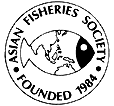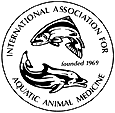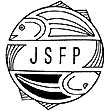
Scott LaPatra
Clear Springs Food, Inc.
Buhl, Idaho 83316 USA
208 543 3456; 208 543 4146 (fax)
scottl@clearsprings.com
Alpharma's Aquatic Animal Health Division is the world's largest manufacturer of vaccines for farmed fish. With sister offices and manufacturing plants in Bellevue, Washington and Oslo, Norway, Alpharma AAHD has a distinct advantage in the marketplace. From its roots as an analytical research lab in 1971, through its acquisition by AL Labs in 1989 and its merger with Apothekernes Laboratorium in 1994, Alpharma AAHD has led the way in pioneering vaccines for the world's developing aquaculture industry. The most widely used vaccine in the world today is an Alpharma multivalent (protects against several diseases) injectable vaccine for farmed salmon. One of Alpharma's keys to success has been the development of a unique mineral oil adjuvant system, which is used in all of Alpharma's injectable vaccines, and helps the vaccine protect against disease for an extended period of time, reducing the need for booster vaccinations and antibiotics. These oil-based vaccines have become the industry standard. Alpharma AAHD employs over 75 staff members, eighteen of whom work in the research and development department. With the ability to invest 25% of our budget back into Research and Development, Alpharma is extremely dedicated to the aquaculture industry. We are remaining primarily focused on fish vaccines and have many new projects in the works. Alpharma's Aquatic Animal Health Division looks forward to continuing its part in supporting the aquaculture industry. We believe that our long industry association has proven that Alpharma is a company that can be trusted to produce consistent, quality vaccines.
 |
American Fisheries Society
Fish Health Section Scott LaPatra Clear Springs Food, Inc. Buhl, Idaho 83316 USA 208 543 3456; 208 543 4146 (fax) scottl@clearsprings.com |
AMERICAN FISHERIES SOCIETY FISH HEALTH SECTION
The American Fisheries Society (AFS) Fish Health Section (FHS) supports an association of individuals who wish to communicate their interests with others in the aquatic health field through section-sponsored publications, meetings, workshops, and symposia. The FHS produces the quarterly Fish Health Section Newsletter and a membership directory and sponsors the Society's Journal of Aquatic Animal Health. The FHS publishes and updates the "Blue Book" and Suggested Procedures for the Detection and Identification of Certain finfish and Shellfish Pathogens, and oversees the certification of Fish Health Inspectors and Fish Pathologists. AFS-FHS recognizes individual contributions through the advancement of fish health through it S.F. Snieszko Award.
AMERICAN VETERINARY MEDICAL ASSOCIATION
The American Veterinary Medical Association (AVMA) comprises over 60,000 veterinarians in the U.S., 320 in Canada and more than 300 who reside in 72 countries outside the U.S. and Canada. The AVMA Aquaculture and Seafood Advisory Committee was formed in 1993 to support the interaction and involvement of veterinarians in aquaculture. A directory of U.S. veterinarians who are involved with aquatic medicine is available from the AVMA.
 |
Asian Fisheries Society
Fish Health Section Celia Lavilla-Pitago Southeast Asian Fisheries Development Ctr., Aquaculture Dept. Tigbauan, 5021 Iliolo, Philippines (62-33) 335-1009, 336-2965; 336-2937 (fax) celiap@aqd.seafdec.org.ph |
ASIAN FISHERIES SOCIETY -- FISH HEALTH SECTION
 |
European Association of Fish
Pathologists Maura Hiney University of Galway, Dept. of Microbiology, Fish Disease Group Galway City, Ireland 353 91 524411 x3124; 353 91 750514 (fax) maura.hiney@ucg.ie |
EUROPEAN ASSOCIATION OF FISH PATHOLOGISTS
Frigid Units, Inc. has been in the industry since the early 1950's and is dedicated to supplying a top quality product. Equipment is used wherever a controlled environment is required, ie: research and development, aquatic life, hydroponics and bait dealers. Such locations as Colleges and Universities, Government Installations (Fish and Wildlife Service, NBS, EPA, Food & Drug Administration, Corps of Engineers, etc.) and Marine and Industrial Labs throughout the world. Frigid Units takes great pride in the quality and finish of our products. All tanks have a satin smooth interior surface that requires minimum effort for maintenance. A large selection of tanks molds are readily available including our "LIVING STREAM," MIN-O-COOL, and our versatile patented STREAM MODULES that are attractive to labs where space is limited. Also, we have the flexibility to manufacture to special needs. Our WATER CHILLER UNITS cool, aerate and circulate in one operation. Units are available in three sizes for use in fresh &/or salt water. Chillers can be used with our tanks or adapted to your own equipment. They are now available with 1000W to 3000W heating elements (Patent Pending). A dual digital thermostat is used to select required temperature using a single power source. Control has choice of Fahrenheit or Celsius and will maintain about +/- 1 degree, from 35 to 100 degrees Fahrenheit. If you have any questions, please contact our office (419/474-6971, Fax: 419/474-2909 or E-mail: frigidunits@toledolink.com).
FISH AND WILDLIFE HEALTH PROGRAM AT THE COOPERATIVE OXFORD LABORATORY
The Fish and Wildlife Program was established to provide support information on natural resources to the State of Maryland Department of Natural Resources (DNR). Scientists, veterinarians, and biologists work toward a common goal of monitoring fish and wildlife population health and disease status. The program is located at the Cooperative Oxford Laboratory (COL) in historic Oxford, MD. Established in 1987, COL is a joint research and monitoring facility of MD DNR and the National Oceanic and Atmospheric Administration (NOAA). Located on 11 acres on the Tred Avon River, the complex includes laboratories, an extensive aquatic scientific library, and the R.V. Laidly, a 55-foot research vessel. Activities at the laboratory focus on diagnosing and monitoring diseases of shellfish, finfish, marine mammals, sea turtles and terrestrial wildlife. The Mid-Atlantic Mammal and Sea Turtle Stranding Network is also based here. The lab's marine and estuarine scientists work to ensure that fish and wildlife resources provide for our future as they have shaped our past. The facility is open year round Monday through Friday from 8 AM through 5 PM. Guided tours and other educational opportunities are available by advance request.
 |
International Association for
Aquatic Animal Medicine Lisa Ford University of Idaho, Department of Fish and Wildlife Moscow, Idaho 83844-1136 USA 208 885 7608; 208 885 9080 (fax) lford@uidaho.edu |
INTERNATIONAL ASSOCIATION FOR AQUATIC ANIMAL MEDICINE (IAAAM)
The objectives of the International Association for Aquatic Animal Health (IAAAM) are 1) to advance the art and science of aquatic animal medicine and health and promote the free exchange of knowledge in the interest of improving the health care and husbandry of aquatic animals in the domestic sense and the proper management of aquatic animals; 2) to proved an organization within which interested and professionally qualified individuals can work together to achieve these objectives; 3) to provide a setting in which the development of the practice of aquatic animal medicine, by doctors of veterinary medicine who so aspire, may be facilitated and enhanced; and 4) to promote the application of veterinary medicine principles, boy doctors of veterinary medicine, to aquatic animal disease problems. Membership includes persons who have contributed to the advancement of aquatic animal medicine, are involved in aquatic animal medicine practice, research or teaching aquatic animal medical science, are engaged in the management of aquatic animals, or persons who devote a portion of their professional activities to aquatic animal medicine or science.
 |
Japanese Society of Fish Pathology Hisatsugu Wakabayashi University of Tokyo, Department of Aquatic Bioscience Yayoi 1-1-1, Bunkyoko, Tokyo, 113 Japan 81 3 3812 2111 x5282; 81 3 3812 0529 (fax) ahisa@hongo.ecc.u-tokyo.ac.jp |
JAPANESE SOCIETY OF FISH PATHOLOGY
THE MARYLAND SEA GRANT COLLEGE
The Maryland Sea Grant College, one of twenty-nine Sea Grant programs around the nation, draws on the strength of universities to foster the highest quality marine-related research, education and outreach. Maryland Sea Grant has supported ground-breaking work on fisheries biology, on nutrient and oxygen dynamics in the Chesapeake Bay, on the effects of chemical contaminants in the ecosystem, and on the invasion of nonnative marine species. Working to move information from research laboratories and classrooms to the larger public, Maryland Sea Grant also sponsors numerous workshops, conferences and symposia, and has produced award-winning books, films, videos and other materials, including a recent book on the Eastern oyster, and a half-hour documentary on exotic marine species, entitled Alien Ocean. Maryland Sea Grant has also made full use of the World Wide Web, and as part of a quick response to concerns about the toxic dinoflagellate, Pfiesteria, has worked with the Aquatic Pathobiology Center (University of Maryland, Baltimore) to create an extensive web page on Pfiesteria, lesions and fish health (http://www.mdsg.umd.edu/fish-health). Agents and specialists from the Sea Grant Extension Program, operated in conjunction with the University of Maryland Cooperative Extension Service, also reach out to a wide audience through workshops and training materials to aquaculturists, marine business owners and concerned citizens.
MARYLAND AQUACULTURE ASSOCIATION Creating Partnerships, New Directions
Mission: The Maryland Aquaculture Association promotes the success of sustainable, environmentally-sound, private aquaculture in Maryland. Accomplishments: Facing considerable financial and socio-political obstacles and pressure, in a state with great environmental and socio-political diversity, the Association conceived of the Oyster Recovery Partnership. We also presented numerous workshops, co-sponsored various other events, most recently "Stripers 2000" and "Financing Aquaculture" with substantive inputs from the University of Maryland and Maryland Department of Agriculture (MDA) ans well as USDA and NOAA. Current and Future Activities: Maryland will soon promulgate the first Aquatic Animal Health Policy with our help. The Association is also establishing a watershed-wide Regional Alliance of State Aquaculture Associations effecting the Chesapeake Bay and other nearby estuarine systems. This alliance will deal with industry and environmental aspects of common problems including aquatic animal health, effluent quality and control of harmful non-indigenous species. The Association's new "Program 2000" provides outreach to local citizens and organizations in a cooperative effort with established state and regional groups to educate and raise awareness in Maryland aquaculture fisheries, and aquatic ecosystems. For more information contact Dr. Tom Hopkins, President (301 353-0363; email at thopkins@biosea.com) or visit the "MDAquaAssn" web page at http://www.mdaqua.org/.
NATIONAL HEALTH AND ENVIRONMENTAL EFFECTS RESEARCH LABORATORY, USEPA GULF ECOLOGY DIVISION
The Gulf Ecology Division of EPA's National Health and Environmental Effects Research Laboratory is responsible for the study of physical, chemical, and biological dynamics of costal wetlands, estuaries, and near-shore marine environments. Our goal is to protect and preserve the living resources of the Gulf of Mexico, southeastern Atlantic, U.S. Caribbean islands and similar environments by providing descriptive data and developing diagnostic procedures to characterize the ecological condition of near-costal areas and corresponding watersheds, describing sources and causes and evaluating rates of environmental decline. The research program is designed to: 1) monitor and assess the condition of coastal wetlands, bays, estuaries, and coral reefs of the Gulf of Mexico and evaluate the causes of changes; 2) develop biological and ecological criteria used to classify the ecological condition of coastal wetlands, bays, and estuaries; to detect significant changes in condition as related to impacts from chemical contaminants, biotechnology products, disease, nutrients, energy development, and global warming, and to identify cause(s) of ecological change, using both reactive (diagnostic and epidemiologic) and predictive approaches; 3) determine the relationships of environmental scale, and temporal and spatial variation to exposure and effects on biodiversity and ecological function. There are approximately 130 people at the Gulf Ecology Division. Of these, 70 are EPA employees: 26 Ph.D., 12 M.S., 20 B.S., 6 A.A. and 6 non-degreed. The remainder are technical support contractors, visiting scientists and undergraduate and graduate students. Division scientists publish research results pertaining to the aforementioned areas in peer-reviewed scientific journals and publicly available EPA reports.
 |
National Shellfisheries Association Stephen Tettelbach Long Island Univ, Southampton College, Natural Science Division Southampton, New York 11968 USA 516 287 8418; 516 287 8419 (fax) stettelb@southampton.liunet.edu |
NATIONAL SHELLFISHERIES ASSOCIATION
NORTHEASTERN REGIONAL AQUACULTURE CENTER (NRAC)
The goal of the Northeast Regional Aquaculture Center (NRAC) is to develop and support aquaculture research, development, and demonstration activities to enhance production by the aquaculture industry in the northeastern United States. This Center is one of five Regional Aquaculture Centers established by the U.S. Congress and funded by the U.S. Department of Agriculture. The Northeast Regional Aquaculture Center develops and sponsors cooperative regional research and extension projects, develops communications and networking among the many educational, commercial, and state and federal institutions involved in aquaculture, and hosts conferences and workshops. A major effort is involved in funding regional projects for the aquaculture industry. Visit the NRAC website for updates and additional information (http://www.umassd.edu/specialprograms/nrac/welcome.html).
SOCIETY OF ENVIRONMENTAL TOXICOLOGY AND CHEMISTRY (SETAC)
In the 1970's no forum existed for interdisciplinary communication among environmental scientists biologists, chemists, toxicologists and others interested in environmental issues such as managers and engineers. The Society of Environmental Toxicology and Chemistry (SETAC) was founded in 1979 to fill the void. Based on the growth in membership, annual meeting attendance, and publications, the forum has been well served. A unique strength of SETAC is its commitment to balance the interests of academia, business, and government. The Society by-laws mandate equal representation from these three sectors for officers, Board Directors, and Committee members. And although there is no control mechanism, the proportion of members from each of the three sectors has remained nearly equal over the past 15 years. Like many other professional societies, SETAC publishes an esteemed scientific journal and convenes an annual meeting replete with state-of-the-science poster and platform presentations. Because of its multidisciplinary approach, however, the scope of the science of SETAC is much broader in concept and application than that of many other societies. SETAC is concerned about global environmental issues. Its members are committed to good science worldwide, to timely and effective communication of research, and to interactions among professionals so that enhanced knowledge and increased personal exchanges occur. A sister organization, SETAC-Europe, was founded in 1989, and the nonprofit SETAC Foundation for Environmental Education in 1990. As evidence of international acceptance of the SETAC model, member groups have been proposed in South America, Russia, South Africa, Japan, India, and Australia/New Zealand. SETAC membership is over 5,000 members strong from 50 U.S. states, 9 Canadian provinces, and more than 60 other countries worldwide.
U.S. GEOLOGICAL SURVEY BIOLOGICAL RESOURCES DIVISION
The USGS Biological Resources Division's Biomonitoring of Environmental Status and Trends (BEST) Program was initiated as a revision/expansion of the National Contaminant Biomonitoring Program. One aspect of the BEST program focuses on monitoring contaminants and effects across broad geographic areas. This approach is currently being tested in the Mississippi, Columbia, and Rio Grande basins. Combined objectives of these projects describe the occurrence and distribution of contaminants and their effects in fish in the three basins: quantitatively evaluate the performance of aquatic methods used by BEST; and evaluate collaborations with two programs in the USGS Water Resources Division: the National Stream Quality Accounting Network (NASQAN II) and the National Water Quality Assessment (NAWQA). Sampling sites were located at historic NCBP fish monitoring sites in all three basins, at NASQAN II water quality sampling sites in the Columbia and Rio Grande basins, and at sites within two NAWQA study units in the Mississippi River basin. Primary species targeted at each site were common carp (Cyprinus carpio) and largemouth bass (Micropterus salmoides); other species were collected as alternates, depending on habitat and location. Individual fish (~40/station) were analyzed for reproductive biomarkers (vitellogenin and sex steroid hormones), histopathological alteration, macrophage aggregates, EROD activity, lysozyme activity, and general health measures (organosomatic and ponderal indices, observations of grossly visible lesions, deformities, and parasites). Organochlorine (pesticides and total PCBs) and elemental (heavy metals and metalloids) contaminant analyses and H4IIE bioassay for dioxin-like activity were performed on fish samples composited by species and sex. While some biomarker, bioassay, and analytical chemistry results are in, the remainder are anticipated this autumn.